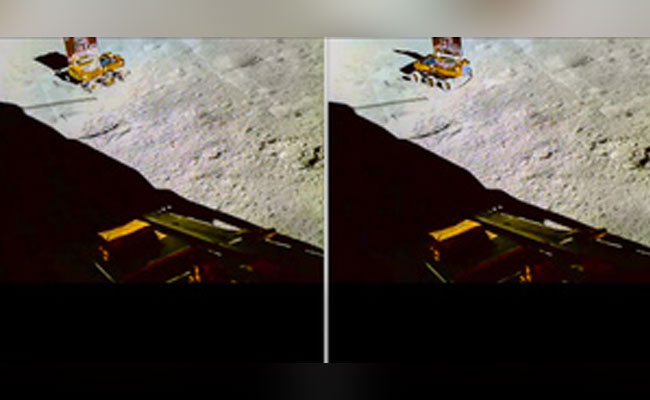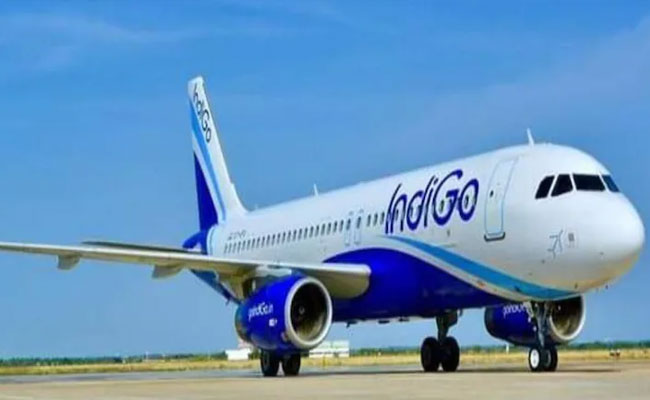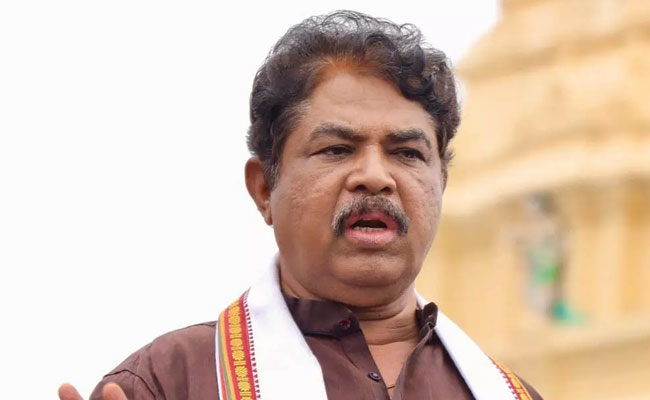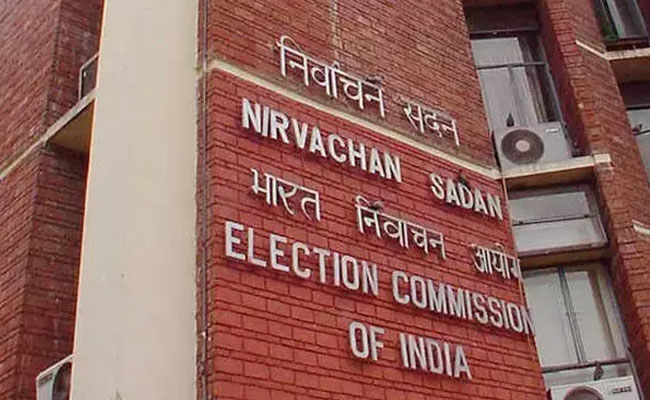New Delhi (PTI): What was known in theory has now been confirmed twice. The Chandrayaan-3 mission has authenticated the presence of sulphur on the lunar south pole region after on site tests, a historical first that could provide clues to the origins of the Moon and also have profound significance for space exploration, say scientists.
On Thursday, India's space agency ISRO said the Alpha Particle X-ray Spectroscope (APXS) instrument onboard the Pragyan rover confirmed the presence of sulphur and some other elements in the lunar south. Before that, on Tuesday, ISRO announced that another instrument, the Laser-Induced Breakdown Spectroscope (LIBS), found sulphur in the region.
In line with expectations, ISRO also reported the LIBS instrument had detected aluminium, calcium, iron, chromium, titanium, manganese, silicon and oxygen.
"The elements found on the Moon are not merely isolated compounds. They are time capsules carrying the whispers of cosmic history. Such findings not only reshape our comprehension of lunar formations but also offer potential prospects for lunar exploration and habitation," Akash Sinha, who was involved in developing software for the Pragyan rover, told PTI.
"One prevailing theory is that the sulphur may be trapped within water ice, implying that we might be on the brink of a monumental discovery: the physical presence of water ice on the moon," the professor of practice at Shiv Nadar Institution of Eminence in Delhi-NCR added.
An old undated document from the US space agency NASA suggested the potential utilisation of sulphur for making lunar bricks or concrete using it with moon soil. Interestingly, China's reported plans to test printing bricks from lunar soil this decade for constructing a permanent moon base align with this idea.
The revelation of sulphur's presence might hold clues to the Moon's composition and its volcanic past, scientists said.
"Surface sulphur comes from volcanic activity, indicating heavy volcanism at some point in the Moon's history. However, the detection is from only one spot, so we need more data to gain a clearer picture," said T V Venkateswaran, a scientist at Vigyaan Prasar, an autonomous organisation under the Department of Science and Technology (DST).
Sinha added that the discovery of sulphur represents a significant breakthrough in the understanding of lunar geology.
"The presence of sulphur, especially in an area where volcanic activity a common source of sulphur is notably absent opens up intriguing possibilities about the origins of the Moon," he said.
According to astrophysicist Sandip Chakrabarti, the in-situ measurements definitively confirm sulphur's presence in the region, a feat beyond the capabilities of the instruments on the previous Chandrayaan 1 and 2 orbiters.
"The compositions show abundant lighter metals such as aluminium and also abundant sulphur and iron. Sulphur could come from lunar volcanoes. Only traces of heavy metals such as titanium, and chromium, were found. These are along the expected lines," Chakrabarti, director of the Indian Center for Space Physics in Kolkata, told PTI.
These elements, he explained, aren't in their pure form and would need processing for future extraction.
"The discoveries made by Chandrayaan-3 hold vast implications for lunar exploration. Beyond the allure of space travel, the presence of these elements paints a vivid picture of the Moon's character," Chakrabarti reflected.
Experts also believe that aluminium's lightweight strength could become a resource for future missions, potentially transforming the Moon into a launchpad for further space exploration. Calcium's critical role in biological processes could fuel discussions about the Moon's potential as a scientific research hub.
Chakrabarti expressed his enthusiasm for Pragyan's contribution. "It is indeed heartening that Pragyan is actually sending the composition of the topsoil of the landing area, namely, Shiv-Shakti point."
He also highlighted the need for helium, hydrogen and water for future space travel, survival and power generation.
"Right now, we are concentrating on survival on the Moon and not getting richer," he added.
ISRO has initiated a thorough investigation into the presence of hydrogen.
Venkateswaran, who is also a member of the outreach committee of the Astronomical Society of India, emphasised the rover's role in confirming a finding from Chandrayaan-1 about hydrogen particles reflected by the Moon's surface in 2008.
"We do need to see water in any of its forms and hydrogen. That would be a genuine achievement," Chakrabarti added.
Chandrayaan-3 touched down on the lunar south pole on August 23, making India the first country to land on the uncharted surface.
Let the Truth be known. If you read VB and like VB, please be a VB Supporter and Help us deliver the Truth to one and all.
Mumbai (PTI): Aviation watchdog DGCA on Friday eased the flight duty norms by allowing substitution of leaves with a weekly rest period amid massive operational disruptions at IndiGo, according to sources.
As per the revised Flight Duty Time Limitations (FDTL) norms, "no leave shall be substituted for weekly rest", which means that weekly rest period and leaves are to be treated separately. The clause was part of efforts to address fatigue issues among the pilots.
Citing IndiGo flight disruptions, sources told PTI that the Directorate General of Civil Aviation (DGCA) has decided to withdraw the provision 'no leave shall be substituted for weekly rest' from the FDTL norms.
ALSO READ: 49 Indigo flights likely to be cancelled from Hyderabad
"In view of the ongoing operational disruptions and representations received from various airlines regarding the need to ensure continuity and stability of operations, it has been considered necessary to review the said provision," DGCA said in a communication dated December 5.
The gaps in planning ahead of the implementation of the revised FDTL, the second phase of which came into force from November 1, have resulted in crew shortage at IndiGo and is one of the key reasons for the current disruptions.
#BREAKING: #DGCA relaxes a clause which debarred airlines to club leaves with weekly rest to mitigate #IndiGo crisis
— Economic Times (@EconomicTimes) December 5, 2025
🔴 Catch the day's latest news here ➠ https://t.co/8eVBGnsJUA 🗞️ pic.twitter.com/KUWc8R2Kso





